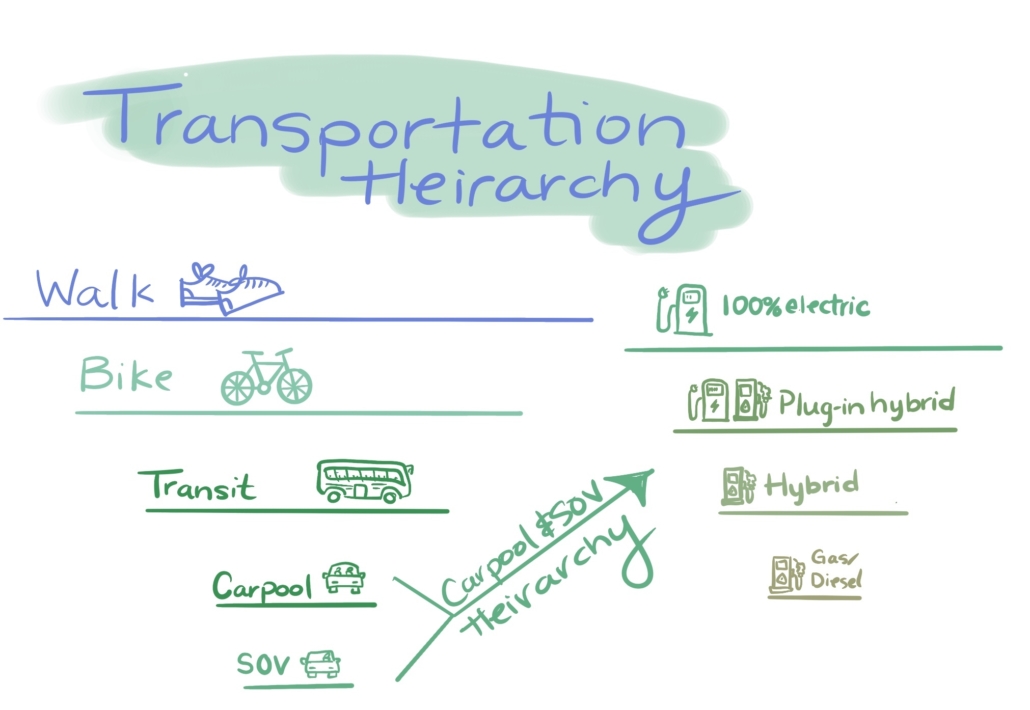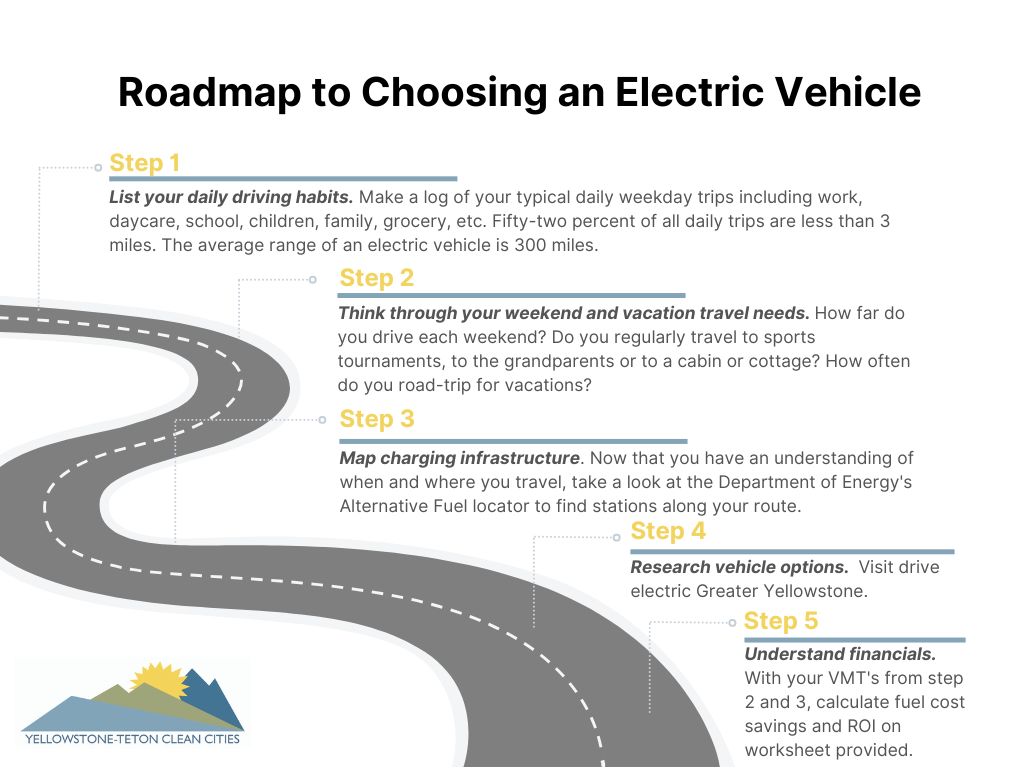Individual Transportation Choices
Transportation to and from work, school, errands, and vacation, is an overarching component of our everyday lives. How we get around is something many of us make in a split-second decision, we quickly grab our keys in the morning and some of us painstakingly map out our bus route to ensure we are not late for work or decide each day if biking is possibly based on the forecast.
Driving a personal gasoline vehicle can account for over 30% of a family’s total greenhouse gas emissions. The average American family spends nearly $10,000/year on transportation needs which is about 16% of a family’s total annual expenditures. If a family is in a position to have control over their transportation choices, there are several options to reduce transportation costs and greenhouse gas emissions. Many transportation options are better choices for your health in addition to the greenhouse gas and fuel expense reductions. The following is a visual to help determine the least impactful transportation option.
Determine If and What Electric Vehicle Meets Your Needs
The average American family owns 2 vehicles. If at least one of these vehicles is used for simply around-town trips or commuting to work, they can easily be swapped out for an electric vehicle. The decision to decide to purchase an electric vehicle can sometimes feel overwhelming, which is very understandable because this is a new fuel for so many of us. To help determine if and what electric vehicle can fit your needs or that of your family, we’ve put together a five-step process for you to go through. You can do this all at once, but we recommend doing one step per day for a work week. Starting on a Monday and ending on a Friday, you’ll know if and what electric vehicle you should purchase next. By breaking down the steps to deciding if you should go electric, the process to decide is more manageable and less overwhelming. Many of us put off decisions that feel overwhelming but when broken down into smaller steps it is much more approachable and easy to find success. Please download the worksheet to fill out each day.
1.) List your daily driving needs: distance (miles or km) x days of the week
- Work
- Daycare
- School
- Afterschool programs
- Errands (grocery store, library, post office)
2.) Calculate your typical weekend and vacation travel.
- List the distance from your home to your common weekend destination, multiply by the number of weekends per year you typically travel there.
- List the distance from home you may drive to vacations that occur once or twice a year.
3.) Map charging stations for the following routes:
- Work
- Daycare
- School
- Afterschool Programs
- Errands
- Common weekend trips
- Occasional yearly vacations
4.) Research Vehicle Options
- Drive Electric Greater Yellowstone
- Fueleconomy.gov
- AFDC
- Winter ready
- Family-friendly
5.) Understand Cost
- Upfront costs
- Fuel costs
- Compare fuel costs to a conventional vehicle
Worksheet to support these steps coming soon.


